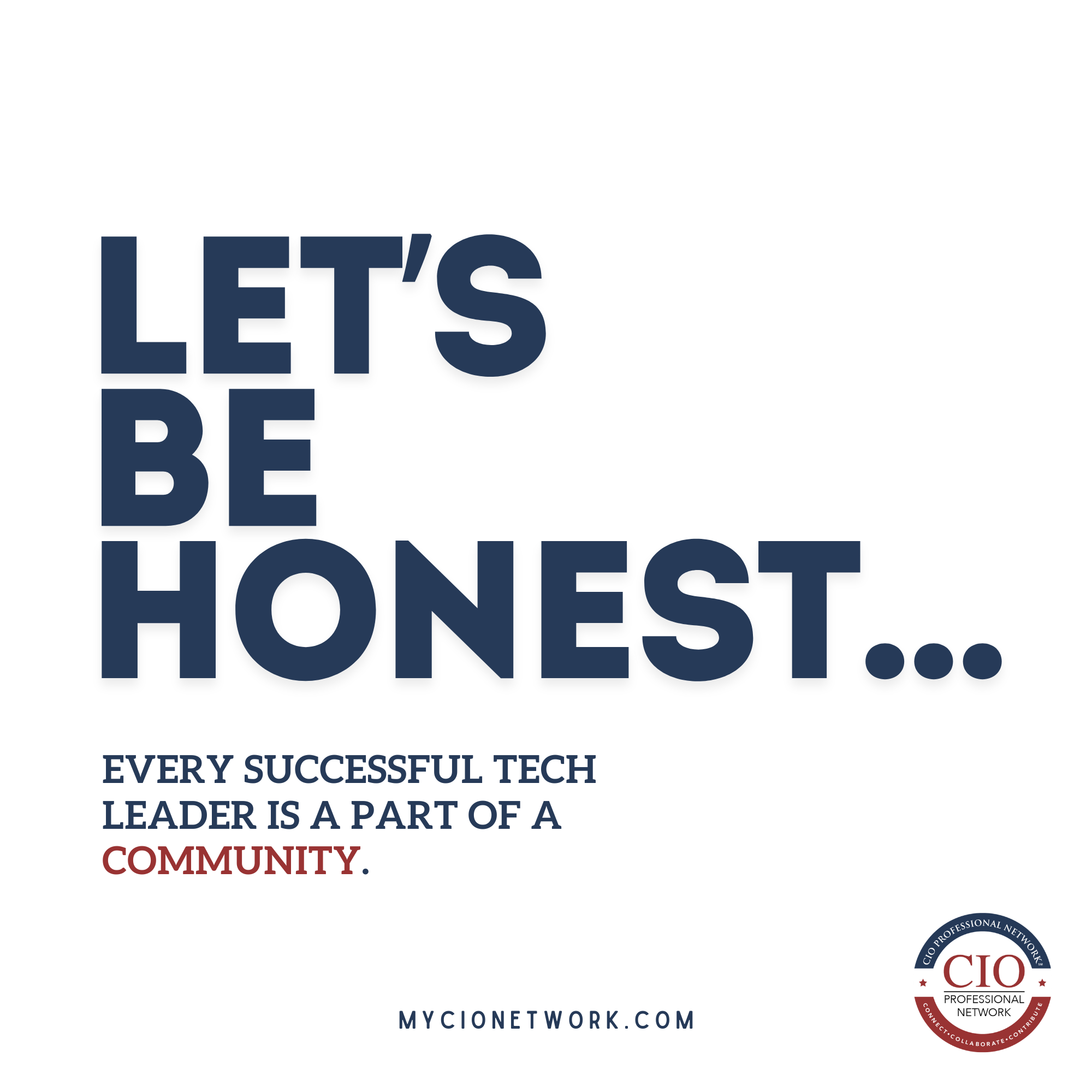Too often, a search for transformational technology leadership begins with automation and ends with abstraction. What should be a thoughtful, strategic process has become dangerously over-mechanized.
Recruiters rely on keyword filters, digital forms, and dashboards that reduce complex individuals to sanitized profiles on a screen. Armed with AI-powered platforms, applicant tracking systems, and endless data streams, it’s easy to lose sight of the person behind the résumé. Years of experience, technical certifications, industry background, and geography are all sortable and stack-ranked, but they barely scratch the surface of who a candidate truly is.
The result is a highly efficient process for surfacing qualified candidates, at least on paper.
But hiring a technology executive is not simply a logistical operation, and candidates are not collections of credentials. Behind every profile is a person with a story, and the best recruiters know that identifying great technology leadership talent requires something far more nuanced than matching keywords.
Executive recruiting, especially in the realm of technology leadership, demands a fresh way of thinking.
Ask the deeper questions:
- Who can guide your organization through the next wave of disruption?
- Who can rally teams around a digital vision?
- Who can translate between technology, business, and the boardroom?
The right technology leader meets the requirements on paper and embodies the mission in practice. But finding the best means stepping away from the map and leaning into the mission.
The Allure of Talent Mapping
Talent mapping is a workforce planning process used by organizations and executive search firms to identify and evaluate potential candidates for current and future leadership roles. It typically involves creating visual or data-driven representations of talent within a specific function, market, or industry.
These maps often track factors such as:
- Education
- Career trajectory
- Functional specialization
- Technical expertise
- Certifications
- Compensation benchmarks
In the context of technology leadership, talent mapping can be useful.
It allows organizations to anticipate digital succession needs, benchmark internal talent against peers in the market, and understand how competitors are structuring their IT and digital teams. CIOs, CTOs, and CISOs often appear on these maps alongside key deputies – VPs of Engineering, Heads of Architecture, Directors of Product, and other critical roles that make up the backbone of the enterprise.
While the value is clear, so are the limitations.
These tools are typically built from quantifiable data, titles, tenures, employer reputation, academic background, certifications, and reporting structures. But none of these data points truly capture how a technology leader thinks, builds teams, earns trust, handles ambiguity, or drives transformation in demanding environments.
For example, two candidates may have served as CIOs for global firms in the same industry. But one may have driven cloud transformation across decentralized regions, while the other maintained legacy systems in a risk-averse culture.
On paper, they appear equivalent. In practice, they are entirely different leaders.
This is where recruiters must apply discernment.
People, Not Patterns
In the search for exceptional leaders, recruiters must resist the tendency to over-index on credentials and linearity.
The path to senior IT leadership is rarely straightforward.
Many of today’s most effective technology leaders did not follow a prescribed route. Some began in engineering or product management, others in business operations or consulting. Still others transitioned from adjacent disciplines, gaining their edge from a cross-functional perspective. These diverse paths often include career pivots, industry changes, entrepreneurial ventures, or even time away from the workforce for personal reasons.
Traditional filters and pattern recognition tools can easily overlook such candidates because they do not conform to expected timelines or titles.
But it is precisely these experiences that develop the kind of adaptable, people-centered, and forward-thinking leaders organizations need.
For instance, a candidate who built their career inside a hyper-growth startup may bring agility and speed, even if their title progression seems unconventional. Another who navigated a large-scale ERP overhaul during an M&A integration may understand systems change at a depth that cannot be captured in a keyword search.
Neither story is fully visible in a talent map.
“The right technology leader meets the requirements on paper and embodies the mission in practice.”
When recruiters prioritize pattern-matching over person-mapping, they risk filling roles with those who look right on paper but lack the range, self-awareness, or strategic capability to lead in complexity.
Conversely, when recruiters take the time to uncover the person behind the profile, they often discover hidden gems, those whose journeys have shaped them in powerful ways that traditional metrics cannot measure.
This requires a shift in mindset.
Recruiting top-tier technology talent starts with understanding the full arc of a candidate’s career. It involves identifying patterns in their experience, recognizing how those patterns relate to the challenges ahead, and focusing on their potential to grow into what’s next.
Human Insight As A Competitive Advantage
The rate of technological advancement is putting pressure on organizations to modernize infrastructure, build digital resilience, and capitalize on emerging technologies.
This means hiring technology leaders who can anticipate what’s next.
Yet, the most important leadership attributes, such as change management, emotional intelligence, strategic agility, and influence across cross-functional teams, are difficult to measure through traditional screening.
Human insight fills this gap.
Great recruiters understand context and listen for:
- What drives a candidate
- How they describe their teams
- How they respond to complexity
- How they’ve evolved through past challenges
These human markers are especially crucial when hiring for roles that sit at the intersection of business and technology.
For example:
- A CTO who transformed a legacy bank’s digital infrastructure will speak very differently from one who scaled a product-first startup.
- A CIO who worked in a regulated healthcare environment brings a different lens from one who ran technology at a retail chain.
Both may be strong leaders, but only one may be right for your culture and operating environment.
It is the recruiter’s ability to probe for this nuance that makes the difference.
Culture Fit and Culture Impact
In technical functions, the importance of culture fit is often overlooked in favor of expertise.
Organizations may prioritize a candidate’s experience with specific platforms or architectures, but fail to assess whether that same candidate can lead people, collaborate with peers, or align technology strategy with business objectives.
The best technology leaders shape the cultural tone of their teams.
They bring vision, humility, and resilience. And they must be able to build bridges between the C-suite and engineering floor, between innovation and governance, between ambition and feasibility.
“The path to senior IT leadership is rarely straightforward.”
Recruiters must help hiring executives think beyond cultural fit to cultural contribution.
- What kind of leadership style is needed?
- Is the organization ready for a disruptive visionary, or does it need a steady operational leader who can rebuild trust?
- Will this candidate elevate team morale, increase cross-departmental collaboration, and enhance the credibility of the technology function with the board?
These are the questions that matter most, and they are rarely answered by a résumé or reference alone. They require a recruiter to understand both the organization’s current culture and the candidate’s potential to shape it.
A New Dynamic
CIOs are now expected to be business strategists, change agents, customer advocates, and operational guardians, all at once.
The stakes are higher. The margin for error is smaller.
And this heightened visibility puts even greater pressure on hiring the right leaders.
At the same time, the expectations of candidates have changed. Experienced technology leaders want purpose, autonomy, cultural alignment, and growth opportunities. They are evaluating prospective employers with the same rigor that companies use to evaluate them.
“The best CIOs, CTOs, and digital executives are revealed through the kind of meaningful engagement and genuine understanding only a great recruiter can deliver.”
Recruiters who understand these evolving dynamics and who take the time to build trust, communicate with clarity, and explore the human dimension of each hire are better positioned to deliver lasting results.
They are building leadership teams that will define the organization’s future.
What Great Recruiters Do Differently
- They develop deep domain fluency. Top recruiters stay fluent in the technologies, business models, and trends that shape the industries they serve. They understand what it means to lead cloud modernization, implement AI strategies, or build data governance frameworks.
- They build long-term relationships with candidates. Great recruiters don’t show up only when a role opens. They invest in relationships years in advance, gaining insight into a candidate’s evolution, values, and aspirations.
- They explore the story behind the résumé. Instead of asking for accomplishments alone, they inquire about context. What constraints did you face? What did you learn? What would you do differently? These questions help uncover character and judgment.
- They coach and counsel both sides. They serve as trusted advisors to both the candidate and the client, helping frame expectations, manage trade-offs, and align visions on both ends.
- They champion potential as well as performance. The best recruiters understand that great leaders are not just those who have done the job, but those who can grow into it. They help clients see beyond experience and toward capability.
Final Thought: Look Beyond the Map
A map can tell you where a candidate has been. It can suggest how they compare to others in the same function. But it will never tell you what drives them, what kind of leader they are under pressure, or how they will shape the culture around them.
To make the right technology leadership hire, you must go beyond the map.
You must explore the person.
You must listen to their journey, understand their values, and assess their fit not just for today, but for the road ahead.
Because the best CIOs, CTOs, and digital executives are not discovered in data alone. They are revealed through insight, through engagement, and through the kind of human understanding that only a great recruiter can deliver.








